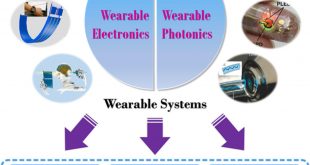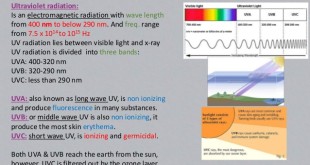A robot, is any automatically operated machine that replaces human effort, though it may not resemble human beings in appearance or perform functions in a humanlike manner. A robot is a machine—especially one programmable by a computer—capable of carrying out a complex series of actions automatically. A robot can be …
Read More »Growing security and military nexus between Pakistan, Turkey, Qatar and Malaysia may become threat to India in future
Pakistan has managed to avoid being placed on the Financial Action Task Force (FATF) blacklist for now following support from all-weather ally China, traditional ally Turkey and Malaysia. The FATF charter mandates support of at least three member states to avoid the blacklisting. The development has come as a relief …
Read More »Wearable Photonic devices making personalized medicine and health tracking a reality.
Currently, old-style personal Medicare techniques rely mostly on traditional methods, such as cumbersome tools and complicated processes, which can be time-consuming and inconvenient in some circumstances. Furthermore, such old methods need the use of heavy equipment, blood draws, and traditional bench-top testing procedures. Invasive ways of acquiring test samples can …
Read More »Optical Networks Vulnerabilities and Security threats
Optical networks are vulnerable to several types of security breaches or attacks, typically aimed at disrupting the service or gaining unauthorized access to carried data, i.e., eavesdropping. Depending on the aim of the attack, security breaches can induce financial losses to the clients or cause network-wide service disruption, possibly leading to huge …
Read More »Militaries thrust on Autonomous convoys or Vehicle swarm technology for building Autonomy-Enabled Future Force
Recent combat operations have continually demonstrated the vulnerability of convoys due to their fundamental requirement for delivering sustainment supplies over long distances of unsecured routes. This operational reality of convoy missions makes them particularly vulnerable to attack and ambush. According to US DOD 52 percent of all battlefield casualties are …
Read More »Technical risk management
All organizations face uncertainty. The effect this uncertainty has on an organization’s objectives is referred to as “risk.” The challenge for management is to determine how much uncertainty or risk to accept and how to manage it to an acceptable level. Risk management includes the strategies, processes, systems, and …
Read More »Mine Countermeasures (MCM) capability on AUV and Unmanned Surface Vehicles (USV) for Anti-Submarine Warfare (ASW) , Surface Warfare (SUW) , and counter terrorism missions
Sea mines are one of the cheapest and most dangerous threats for naval forces; a reality experienced in both World Wars and the Korean War. In order to mitigate the impacts and risks of sea mines on naval operations, advanced navies have been increasing their investments in autonomous Mine Countermeasure …
Read More »DARPA Cornucopia to produce palatable food from microorganisms for soldiers
With nutritional status being central to success in battle, food technology has long been considered an enabler for military operations. Food technology has been instrumental in ensuring that troops remain “fit to fight”. Early military leaders realised that how well their men were fed played a crucial role in success …
Read More »Distributed quantum sensor networks
The overarching goal of quantum information science and its enabled emerging quantum technologies is to demonstrate capabilities beyond what is allowed by their classical counterparts. Sensing is an arena that quantum technologies can achieve advantages over classical sensing technologies for practical applications in the near term. Quantum metrology studies the …
Read More »Military applications of Ultravoilet spectrum becoming feasible with Technology breakthroughs
The electromagnetic spectrum is a series of frequencies ranging from radio waves to microwaves, visible light, X-rays, and gamma rays. As the wavelength of the electromagnetic radiation shortens, the waves have a higher frequency—how quickly electromagnetic waves follow each other—and therefore more energy. Ultraviolet (UV) is electromagnetic radiation with …
Read More » International Defense Security & Technology Your trusted Source for News, Research and Analysis
International Defense Security & Technology Your trusted Source for News, Research and Analysis








